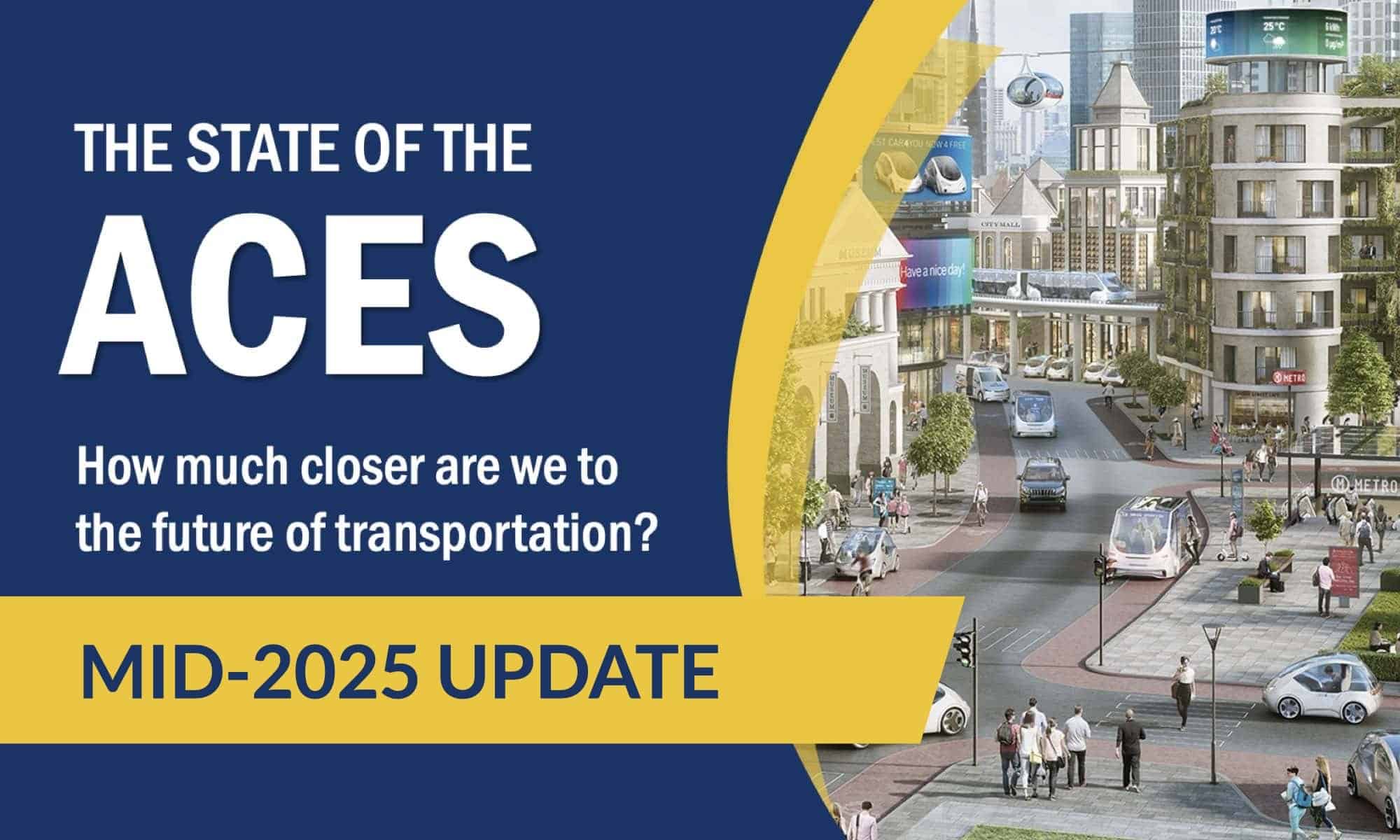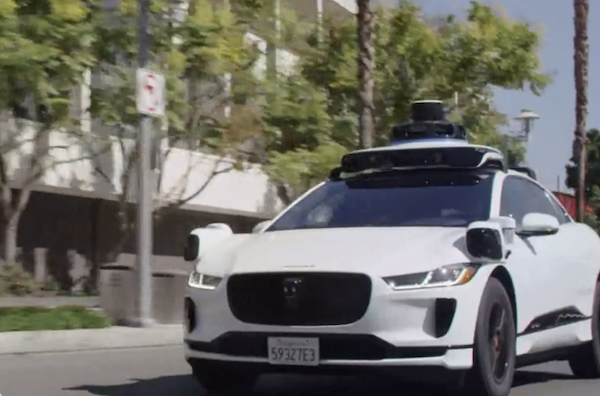
Six months ago, we shared a snapshot of where Autonomous, Connected, Electric, and Shared (ACES) mobility stood. Since then, the pace of change has only accelerated. What was once a cautious, experimental phase is now transforming into a real, scalable industry. Autonomous vehicles — particularly robo-taxis — have taken center stage, proving that the future of mobility is not just coming, but actively arriving on city streets.
Autonomous Vehicles: From Pilots to Paid Services
If 2024 was about proving the technology works, 2025 is about showing it can scale. The most significant shift has been the rapid expansion of robo-taxis, moving from pilot programs in select neighborhoods to revenue-generating services across multiple global cities.
Waymo remains the clear leader. Its slow-and-steady approach has paid off, with commercial services now operating in Phoenix, San Francisco, Silicon Valley, Los Angeles, Miami, Atlanta, and Austin. By mid-2025, Waymo is providing more than 250,000 paid rides each week—double what it achieved just a year ago. New markets are lining up, with Dallas, Washington D.C., and Boston in the company’s sights. Even New York City, long considered one of the most complex and challenging environments for AVs, has opened its doors with limited testing now underway.

While Waymo’s expansion has reinforced trust in AVs, Tesla’s entry into the robotaxi space has highlighted the other end of the spectrum. In June, Tesla quietly launched a small fleet of robotaxis in Austin, Texas. Rides are cheap, geofenced, and still staffed with human monitors. But viral videos showing cars struggling with lane positioning and sudden braking quickly drew the attention of regulators. Tesla’s bold, software-first gamble has kept it in the spotlight, but it underscores the fine balance between speed and safety as the industry matures.
In the weeks since that launch, Tesla has aggressively expanded both the size and scope of its service. By late August, the Austin robotaxi operation had tripled—from its initial coverage area in South Austin to 173 square miles across the city—including the University of Texas campus and stretches along the I‑35 corridor. The fleet has also grown, rising from roughly 10–20 Model Ys to around 30 units, all still under the supervision of in-car safety monitors. The company has secured a Texas ride-hailing license classifying it as a transportation network company—but the vehicles remain officially non-autonomous. With new state regulations taking effect on September 1 (though enforcement is deferred until next summer), Tesla appears poised for a possible public launch within the month. CEO Elon Musk continues to ambitiously target access to more than half the U.S. population by year-end, even as regulators and public safety advocates watch closely.
Expanding the Global Footprint
The race isn’t confined to U.S. soil. In China, Baidu’s Apollo Go has scaled aggressively, logging millions of fully driverless rides across multiple cities, including Wuhan, where services now operate citywide without human supervisors. Meanwhile, WeRide has gone global. From robobuses in Guangzhou to partnerships with Uber in Dubai, and pilots in Europe and the Middle East, WeRide is proving that AV adoption is no longer a single-market story.
In the U.S., smaller players are carving out niche roles. May Mobility launched its first commercial “driver-out” shuttles earlier this year in Georgia, while also revealing a 30-seat “Technobus” aimed at mid-sized cities. And Amazon-owned Zoox continues to push its futuristic, purpose-built pods, with early riders already being shuttled around Las Vegas and San Francisco.
Shared: Ridesharing and Micromobility Evolve
While autonomy captures headlines, shared mobility continues to quietly reshape how people move through cities. Traditional ridesharing platforms like Uber and Lyft remain central to urban mobility, but their role is evolving. Increasingly, these companies are weaving in multi-modal services, giving users the ability to book not just a car, but also a bike, scooter, or even public transit within the same app.
Micromobility in particular has rebounded after a turbulent few years of market consolidation. Operators like Lime, Bird, and Tier are reporting record ridership in 2025, boosted by improved battery range, tighter integration with city infrastructure, and consumer demand for short, affordable trips. In many downtowns, scooters and e-bikes now rival rideshare volumes during peak commuting hours.

Another trend is subscription models—where instead of paying per trip, riders opt for a monthly package covering unlimited scooter rides or bundled mobility credits across modes. This model is finding traction in Europe and beginning to gain ground in U.S. cities.
Shared mobility also ties closely to electrification and sustainability goals. Cities view these services as key to reducing single-occupancy vehicle trips, cutting congestion, and lowering emissions. The growing alignment between shared mobility operators and public transit agencies — through data-sharing agreements, co-branded passes, and infrastructure planning — highlights a shift toward integrated, citywide mobility ecosystems.
Electric and Connected: The Backbone of Autonomy
Autonomy doesn’t exist in isolation. Virtually every robo-taxi fleet deployed today is electric, reinforcing the shift toward sustainability while accelerating the build-out of EV infrastructure. At the same time, connected systems — from high-definition mapping to vehicle-to-everything (V2X) communications — are becoming essential enablers of safe deployment. Together, these forces ensure that the ACES trends remain tightly interwoven: progress in one fuels adoption in the others.
Connected: The Invisible Web Underpinning Modern Mobility
By mid-2025, connectivity has shifted from a premium feature to an industry standard. Analysts project that by 2030, more than 95% of new vehicles sold globally will be connected, with cloud services, real-time analytics, and over-the-air updates baked in. China is already leading this transformation: in April 2025, over 57% of BYD’s sales included smart-assisted driving features, signaling how quickly connected systems are becoming mainstream. The global connected-vehicle market itself is projected to grow from $93 billion in 2024 to $106 billion in 2025, nearly doubling by the end of the decade.
Governments are also playing a crucial role in accelerating adoption. In the U.S., the Department of Transportation has invested $60 million in Vehicle-to-Everything (V2X) pilots across states like Arizona, Texas, and Utah to make connected mobility safer and smarter. From predictive maintenance and infotainment to real-time traffic coordination, connected vehicles are rapidly evolving into the digital backbone of ACES—linking autonomy, electrification, and shared mobility into one cohesive system.
Electric: Accelerating Adoption Amid Policy Shifts
Global EV adoption remains strong in 2025, with more than 9 million EVs sold in the first half of the year, a 28% year-over-year jump. Growth continues to be led by China, where nearly half of all new car sales are now electric and BYD alone is on track to sell 5.5 million vehicles in 2025. Europe is also climbing steadily, though many countries have begun rolling back national subsidies, prompting the EU to explore a region-wide program to stabilize incentives. Together, these markets are pushing EVs toward nearly a quarter of global new car sales by year’s end.
The U.S. picture is more mixed. Sales hit record highs in the first half of 2025, but momentum slowed in Q2 as federal tax credits approached expiration. Automakers have responded by delaying or canceling certain EV models, while new tariffs have added further uncertainty. Still, temporary sales surges ahead of policy deadlines underscore strong underlying demand, and major automakers like Ford are doubling down on long-term electrification plans. Even with shifting incentives, the direction of travel is clear: EVs are cementing their role as the backbone of both consumer mobility and future autonomous fleets.
Challenges and Opportunities
Despite the progress, the road ahead isn’t without obstacles. Safety remains paramount. Waymo’s expansion shows that methodical scaling builds trust, but if public confidence can be fragile when mistakes are caught on video. Regulation is another defining factor. Cities like New York are taking a cautious, highly controlled approach, while China’s more aggressive approvals are accelerating deployment at scale.
Perhaps the most important question is one of public trust. Can robo-taxis win over skeptical city dwellers who rely on reliability and safety above all else? Early adopters are excited, but widespread acceptance will depend on demonstrating that AVs can outperform human drivers not just in technology labs, but in the messy, unpredictable reality of city streets.
Looking Ahead
By mid-2025, ACES adoption has clearly crossed a threshold. Robo-taxis are no longer hypothetical; they’re here, operating daily, and moving tens of thousands of people. The leaders — Waymo in the U.S., Baidu and WeRide in China, and ambitious startups like May Mobility and Zoox — are setting the pace, while companies like Tesla and Uber aim to disrupt the market with scale and brand power.
The next six to twelve months will be critical. As regulators refine frameworks, cities expand pilots, and consumers gain firsthand experience with autonomous rides, the ACES vision is rapidly shifting from promise to practice. The autonomous era isn’t just on the horizon — it’s already pulling up at the curb.




